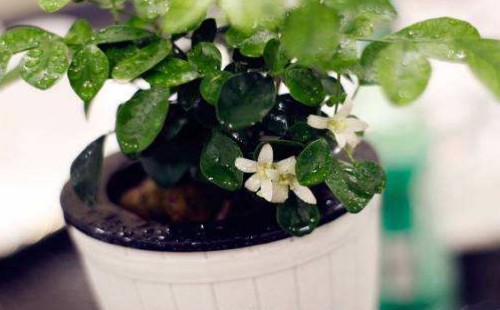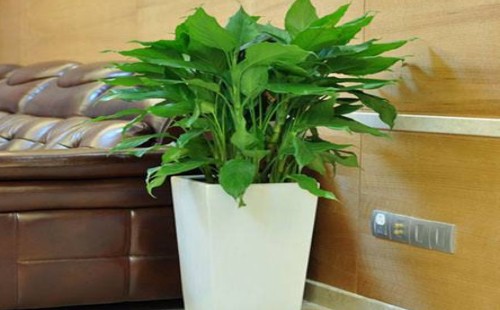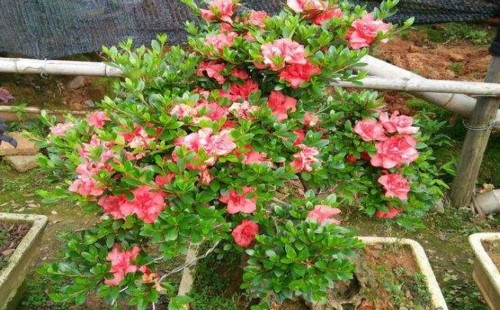What if Jiuli incense doesn't blossom?
Jiuli incense is a kind of evergreen and flower-scented tree species, which is one of the best materials for making bonsai, especially when it is made into bonsai stumps with different shapes and graceful posture, which has higher ornamental value. Usually only when the Jiuli incense bonsai has a good modeling effect, luxuriant branches and flowers, can it give full play to its maximum ornamental value. Unlike other bonsai tree species, Jiuli incense can only release a pleasant aroma when it blossoms, and if it does not blossom, it will not only reduce the ornamental value to a certain extent, but also lose its pleasant fragrance. So what if Jiuli incense doesn't blossom?

There is no doubt that if the Jiuli fragrant bonsai does not blossom, we should try our best to make it blossom and make it blossom and fragrant. Under the condition of normal maintenance and management, Jiuli incense will bloom as scheduled, and its flowering period is usually from April to August, but sometimes it will bloom from August to October in autumn. Since Jiuli mentioned time but did not blossom, then there must be growth problems, and the growth problems are generally caused by uncomfortable growth environment or unscientific maintenance and management methods.
If Jiuli incense does not blossom, then we must first find out the reason why it does not bloom, and then we can adjust the maintenance strategy to promote its flowering. Practice has found that there are usually four situations in which Jiuli incense does not blossom:
First, lack of light
Jiuli incense is a kind of positive tree species that likes light, as long as the temperature is suitable, we should provide it with sufficient light, so as to promote its normal photosynthesis and lay a good foundation for flowering. In addition to the hot summer to avoid exposure to the sun, other seasons generally do not have to take shading measures to allow it to receive as much light as possible. If there is often not enough light, it will often lead to the phenomenon that Jiuli incense does not blossom after entering the flowering stage. If the phenomenon of non-flowering occurs due to the lack of light, we only need to improve the light conditions and provide them with sufficient light.
Second, insufficient watering
As we all know, flowering plants need to consume a lot of nutrients and water, especially water, so that the original can support its smooth flowering. The same is true of Jiuli incense, if there is no sufficient water reserve before flowering, it will be difficult to blossom, or flowering rarely, even if the quality of flowering is not high. Therefore, it is generally necessary to increase watering before budding, so that the plant can store enough water to ensure smooth budding and flowering on time. Although Jiuli incense is also more drought-tolerant, it consumes a lot of water during flowering, so it is necessary to pour enough water before flowering.
Third, too few nutrients
If there are too few or too single nutrients in the soil growing Jiuli incense, it may also affect flowering. Like water, nutrients are an important support for ensuring flowering. The most direct way to replenish nutrients is to topdressing, but topdressing also needs to control the proportion of elements. The general growth period is mainly topdressing nitrogen fertilizer, supplemented by phosphorus and potassium fertilizer, but in order to promote flowering, it is often reversed, mainly phosphorus and potassium fertilizer, supplemented by nitrogen fertilizer. However, topdressing can not be excessive, thin, low concentration is appropriate, do not apply thick fertilizer or raw fertilizer, otherwise it may cause fertilizer damage, not only cause non-flowering, but also affect the normal growth of the plant.
IV. Inappropriate timing
If the growth conditions of Jiuli incense bonsai are satisfied, and the growth environment is also more suitable, then there is still the phenomenon of not blooming. Well, it may not be time to blossom. If the conservation and management work is done well, Jiuli incense can blossom twice a year, but it usually blossoms in April-August in spring and summer, and it may also blossom after autumn, usually in August-October. It is also normal if the bonsai of Jiuli incense does not blossom during these two periods. In this case, we only need to follow the normal maintenance management. Therefore, when we plant and cultivate flowering plants in pots, we must know their florescence in advance so as not to make some jokes.
Time: 2019-05-29 Click:
- Prev

What if the leaves of potted evergreen turn yellow and droop?
In the previous article, the editor mentioned that evergreen is not only a kind of ornamental foliage plant with high ornamental value, but also contains certain toxins in its juice, so on the one hand, we should maintain it well in the process of planting and breeding. at the same time, we should also do a good job of accidental contact and eating, so as to avoid harm to human health and safety. It is true
- Next

What if the summer cuckoo has buds but does not blossom?
Summer cuckoo bonsai blossoms longer than ordinary cuckoo bonsai, so it takes longer to enjoy the flowers. However, sometimes we will find that although there are a lot of buds after the bonsai has entered the flowering stage, it never blossoms. What is the matter? For the bonsai of summer cuckoos, only buds do not blossom.
Related
- Fuxing push coffee new agricultural production and marketing class: lack of small-scale processing plants
- Jujube rice field leisure farm deep ploughing Yilan for five years to create a space for organic food and play
- Nongyu Farm-A trial of organic papaya for brave women with advanced technology
- Four points for attention in the prevention and control of diseases and insect pests of edible fungi
- How to add nutrient solution to Edible Fungi
- Is there any good way to control edible fungus mites?
- Open Inoculation Technology of Edible Fungi
- Is there any clever way to use fertilizer for edible fungus in winter?
- What agents are used to kill the pathogens of edible fungi in the mushroom shed?
- Rapid drying of Edible Fungi

